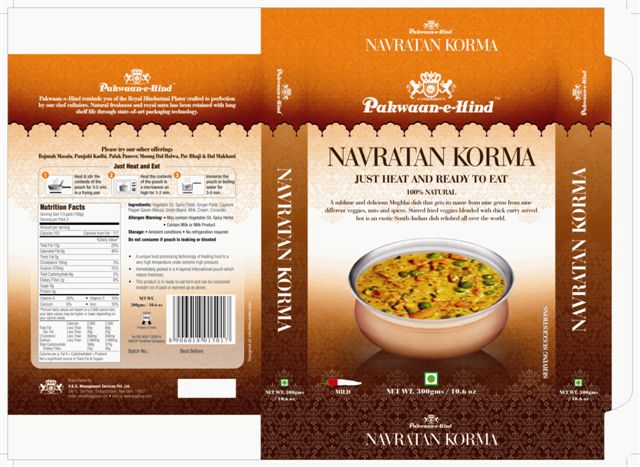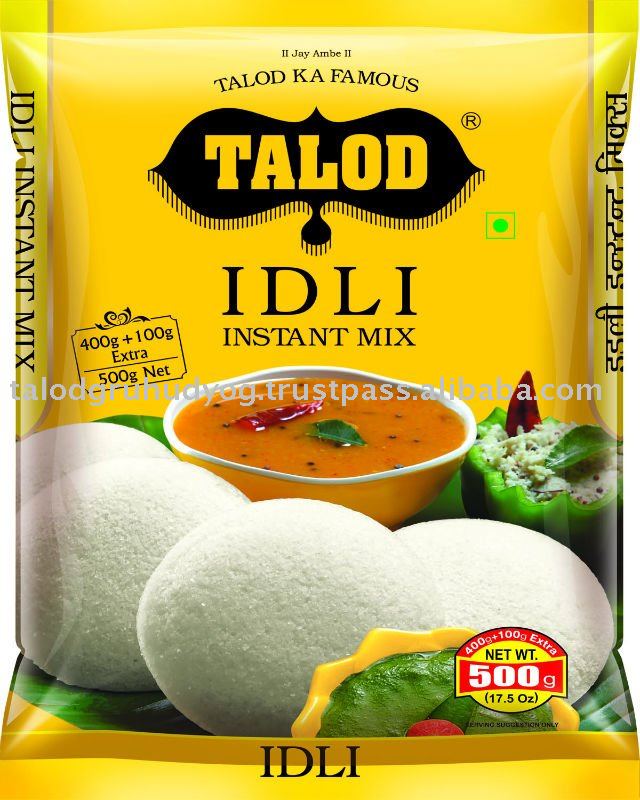Indian Food Products Biography
Source(google.com.pk)
Agricultural sector is the mainstay of the rural Indian economy around, which the socio-economic privileges and deprivations revolve, and any change in its structure is expected to have a corresponding impact on the existing pattern of social equality. The growth of India's agriculture sector during the 50 years of independence remain impressive at 2.7 % per annum. About two-third of this production growth is aided by gains in crop productivity. The need based strategies adopted since independence and intensified after mid – sixties primarily focused on feeding the growing population and making the country self reliant in food production.
Indian agriculture has attained an impressive growth in the production of food grains that has increased around four times during the planned area of development from 51 million tons in 1950-51 to 199.1 million tonnes in 1997-98. The growth has been really striking since sixties after the production and wide spread usage of high yielding varieties of seed, fertilization, pesticides, especially in assured irrigated areas.
History
HistoryOver the 10,000 years since agriculture began to be developed, peoples across the world have discovered the food value of wild plants and animals and domesticated and bred them. Primary importance of these are cereals such as rice, wheat, barley, corn, and rye; sugarcane and sugar beets; meat animals such as sheep, cattle, goats, and pigs or swine; poultry such as chickens, ducks, and turkeys; and products like milk, cheese, eggs, nuts, and oils. Fruits, vegetables, and olives are also an important category of agriculture products; feed grains for animals include field corn, soybeans, and sorghum.
Modern agriculture in India primarily depends on engineering and technology and on the physical and biological sciences. Irrigation, drainage, conservation and sanitation, each of these stages are essential in successful farming, and require specialized knowledge and expert skills of agricultural engineers.
Mechanization, the spectacular characteristic of late 19th and 20th-century agriculture, has eased much of the backbreaking toil of the farmers. More importantly, mechanization has considerably increased the farm efficiency and productivity.
Overview of Indian Agriculture Market History
In several agricultural sectors, India is the world’s leading or one of the largest producers. For example, the country is second largest milk producing country in the world. The agricultural sector in the country is known for its high degree of product diversity. The complementary nature of a number of important Indian agricultural products, in comparison to those produced in west and other countries, provide India considerable export opportunities to these markets. At present, the Indian agriculture industry is on the brink of a revolution, which will modernize the entire food chain, as the total food production in the country is likely to double in the next ten years.
According to recent studies, the total turnover of Indian food market is approximately Rs.250000 crores (US $ 69.4 billion), out of which, the share of value-added food products is around Rs.80000 crores (US $ 22.2 billion). The Government of India has also sanctioned proposals for joint ventures, foreign collaborations, industrial licenses and 100% export oriented units conceiving of an investment of Rs.19100 crores (US $ 4.80 billion) out of which foreign investment is over Rs. 9100 crores (US $ 18.2 Billion).
The Indian agricultural food industry also assumes significance owing to country's sizable agrarian economy that accounts for over 35% of GDP and employs around 65 % of the population. Both in terms of number of joint- ventures / foreign collaborations and foreign investment, the consumer food segment has the top priority. The other salient features of the Indian agro industry, which have the capacity to lure foreigners with assuring benefits are the aqua culture, deep sea fishing, milk and milk products, meat and poultry segments.
Exports
Agricultural exports were 44 % of total exports in FY 1960; they decreased to 32 % in FY 1970, to 31 % in FY 1980, to 18.5 % in FY 1988, and to 15.3 % in FY 1993. This drop in share of agriculture in total exports was somewhat misleading because agricultural products, such as jute and cotton, which were exported in the raw form in the 1950s, have been exported as cotton yarn, fabrics, ready-made garments, coir yarn, and jute manufactures since the 1960s.
The composition of agricultural and allied products for export changed primarily due to the continuing increase of demand in the domestic market. This demand cut into the excess available for export in spite of a continuing desire, on the part of government, to shore up the invariant foreign-exchange shortage. In FY 1960, tea was the major export by value. Oil cakes, cashew kernels, tobacco, raw cotton and spices were about equal in value but were only one-eighth of the value of tea exports. By FY 1980, tea was still a major export commodity, however rice, coffee, fish, and fish products came close, followed by oil cakes, cashew kernels, and cotton. In 1992-93 fish and fish products became the main agricultural export, followed by oil meals, then cereals, and then tea. The share of fish products rose steadily from less than 2 % of all agricultural exports in FY 1960, to 10 % in FY 1980, to around 15 % for the 3-year period ending in FY 1990, and to 23 % in FY 1992. The contribution of tea in agricultural exports fell from 40 % in FY 1960 to around % percent in the FY 1988-FY 1990 period, and to only 13 % by FY 1992.
Excellent export prospects, competitive pricing of agricultural products and standards, which are internationally comparable have created enormous trade opportunities in the Indian agro industry.
Indian Food Products Indian Food Recipes Images Menu Calorie Chart Thali Photography Pictures Photos Dishes Items Photos Pics Images

Indian Food Products Indian Food Recipes Images Menu Calorie Chart Thali Photography Pictures Photos Dishes Items Photos Pics Images

Indian Food Products Indian Food Recipes Images Menu Calorie Chart Thali Photography Pictures Photos Dishes Items Photos Pics Images

Indian Food Products Indian Food Recipes Images Menu Calorie Chart Thali Photography Pictures Photos Dishes Items Photos Pics Images

Indian Food Products Indian Food Recipes Images Menu Calorie Chart Thali Photography Pictures Photos Dishes Items Photos Pics Images

Indian Food Products Indian Food Recipes Images Menu Calorie Chart Thali Photography Pictures Photos Dishes Items Photos Pics Images

Indian Food Products Indian Food Recipes Images Menu Calorie Chart Thali Photography Pictures Photos Dishes Items Photos Pics Images

Indian Food Products Indian Food Recipes Images Menu Calorie Chart Thali Photography Pictures Photos Dishes Items Photos Pics Images

Indian Food Products Indian Food Recipes Images Menu Calorie Chart Thali Photography Pictures Photos Dishes Items Photos Pics Images

Indian Food Products Indian Food Recipes Images Menu Calorie Chart Thali Photography Pictures Photos Dishes Items Photos Pics Images

Indian Food Products Indian Food Recipes Images Menu Calorie Chart Thali Photography Pictures Photos Dishes Items Photos Pics Images
No comments:
Post a Comment